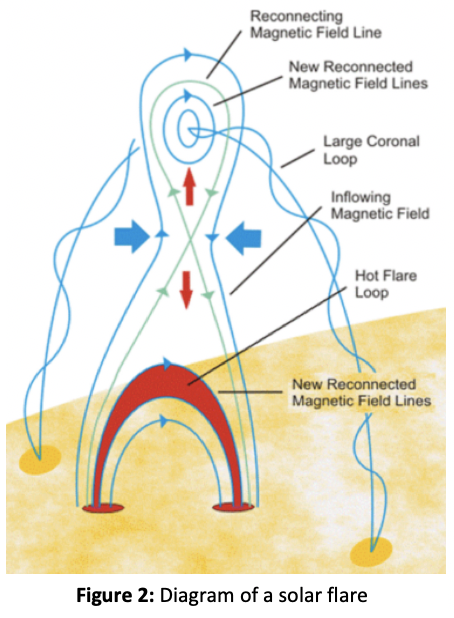What is a Solar Flare?
Whenever the surface of the sun undergoes a bright localized flash, this is called a solar flare. Typically these are located near sunspots, and are usually attended by a coronal mass ejection. It is worth noting however that this flash is all but undetectable compared to the Sun’s total brightness. This phenomena isn’t unique to our Sun, however when this event occurs on any other star we call it a stellar flare.
These are related to plasma ejection and other particles leaving the Sun’s corona to travel elsewhere in space, while also emitting radio waves. When a solar flare is in the direction of Earth it can penetrate our atmosphere on its outer levels after travelling for a few days. This causes a beautiful effect called Aurora Borealis and Aurora Australis, also known as the Northern Lights and the Southern Lights. However these can also disrupt long range radios here on Earth, when penetrating the atmosphere.
A More Rigorous Description
Much like the Earth, our Sun also has layers to its atmosphere. From the inside outward these are the photosphere, the chromosphere, and the corona, each of which is affected by solar flares. Due to the nuclear furnace that is the Sun plasma is heated to extremely high temperatures, in excess of millions of degrees Celsius. During this process the atomic portions of the plasma increase in speed up to being relativistic, or near the speed of light. This process of flaring also produces massive electromagnetic radiation, however the better part of this is in the radio spectrum or as gamma rays meaning we can’t see it and need to use special types of instruments to observe it.
Solar flares have two frequencies of occurence. When the Sun is dormant there will typically be less than one solar flare a week, and when it is active there can be multiple per day. The Sun changes from being active to dormant, and back, roughly every 11 years.
What Causes a Solar Flare?
The current accepted theory is that magnetic reconnection accelerates electrons and other particles to interact with the solar plasma medium. Magnetic reconnection is the process of breaking apart magnetic fields to create new fields. To briefly visualize this, picture two horizontal “magnetic field loops” heading opposite directions, one to the left and one to the right. As these fields approach they will “snap” and join the opposite broken field, now with two vertical fields with one pointing up and the other down. This reconnection produces a helix of magnetic field unconnected to the rest of the medium, and releases energy. As this helix builds up it moves outward and possibly creates a coronal mass ejection. This explanation using magnetic reconnection is consistent with observations of solar flares typically occurring in magnetic hotspots.
It is worth noting that while this explanation of the source of a flare’s energy is widely accepted, the process of translating the magnetic energies discussed into kinetic energies in the accelerated particles is not clear. Beyond this, it is also unknown why there are sometimes inconsistencies with the total number of accelerated particles and there being fewer particles in the coronal mass ejection loop. Further, there is no current model to predict solar flares.
Our IMPRESS satellite will examine solar flares in an effort to better understand the their acceleration mechanisms.
